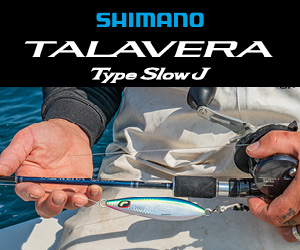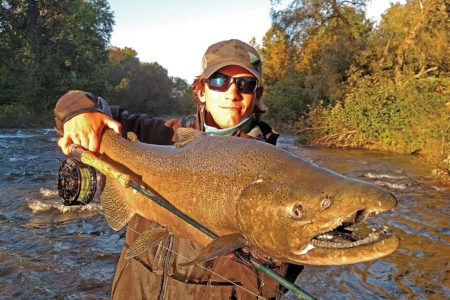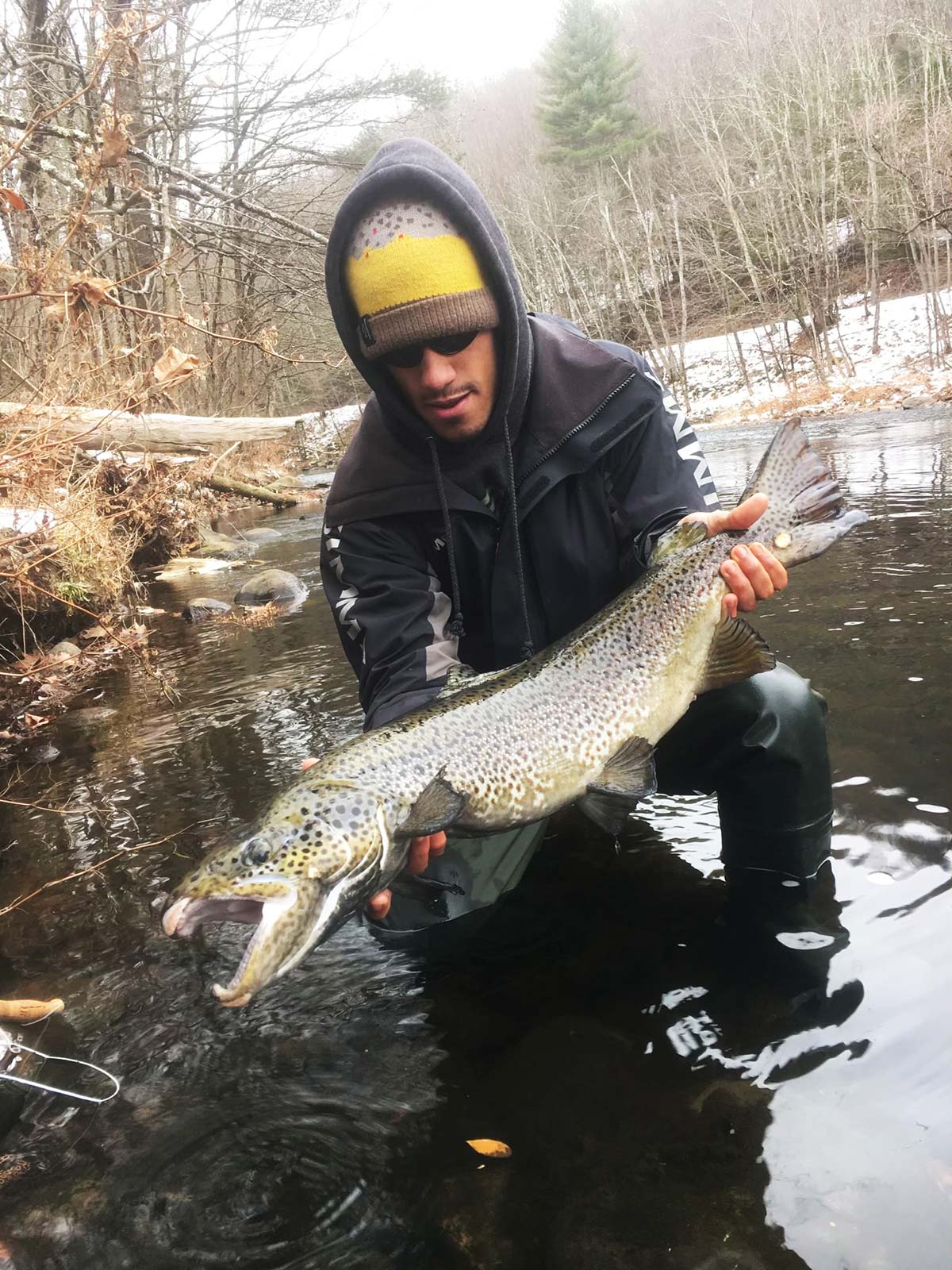
Catch a piece of Connecticut history by targeting broodstock salmon!
I began fishing for broodstock Atlantic salmon in Connecticut when I was still in high school. As soon as I found out that I was living so close to one of the two rivers where fish were stocked, I immediately wanted to catch one. After viewing pictures online of these giant specimens I assumed I would need some heavy tackle. I had a lot to learn.
The year was 2004; armed with my with my 9-foot surf rod and Penn 650, I took to the river with every saltwater lure I owned. I wandered aimlessly along the river with no real plan, or the faintest idea for what I was even looking for. This led to many fruitless trips. When I was lucky enough to stumble across my first salmon (I literally scared it at my feet while wading) I could not believe that a fish of such epic proportions could be found in the river near my house. After seeing that first double-digit salmon, I felt truly lucky to be able to fish for this amazing species, and I knew I had to figure out how to catch one.
Since high school I have refined my tactics after talking to many people and experiencing many different angling situations. I have studied maps, read books, articles and I have fished, over the last 20 years for these “Atlantics” as the locals call them. It has become somewhat of an obsession to locate them and develop a plan to fish for them with accuracy and consistency.
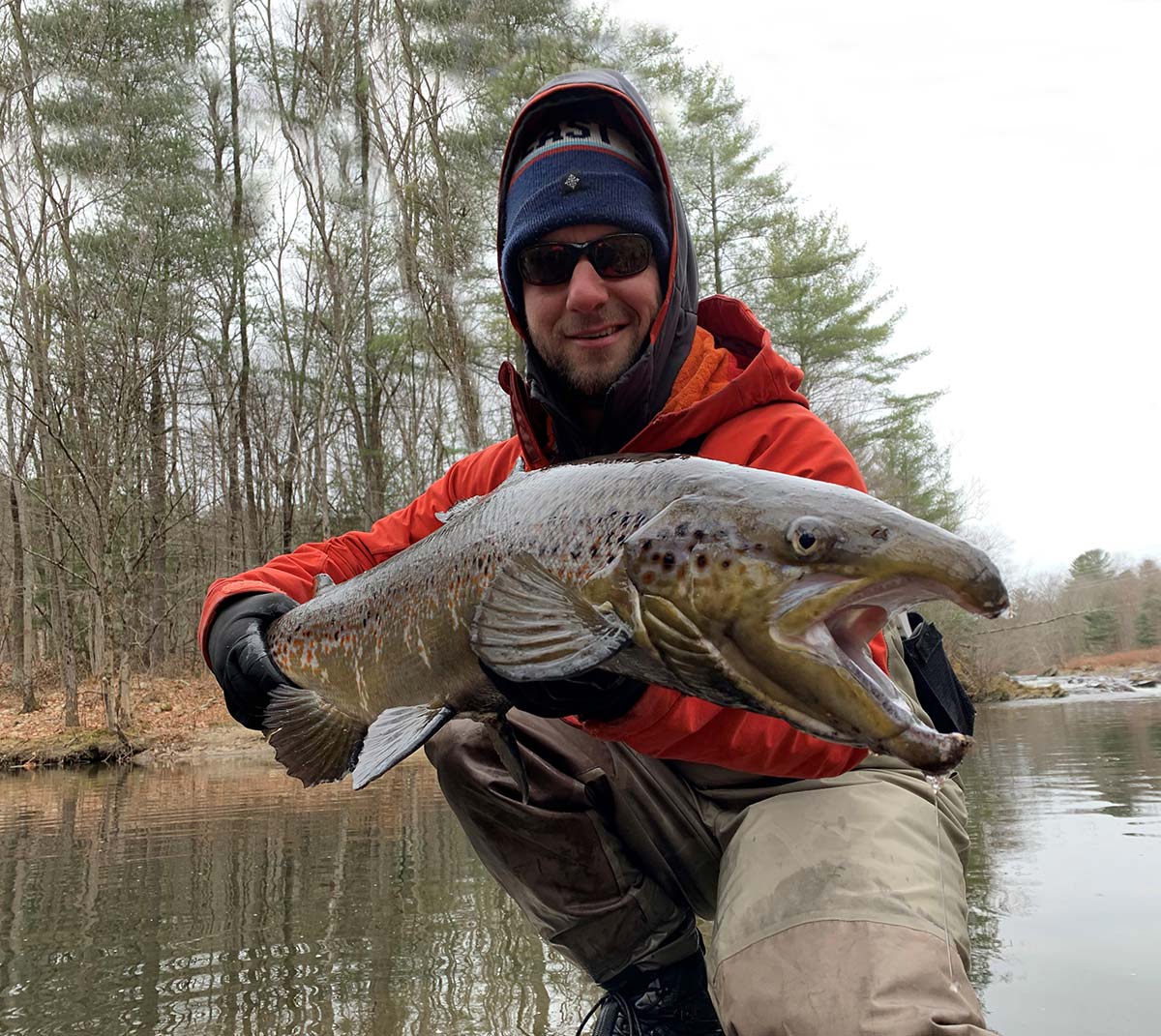
A Unique History
Atlantic salmon (Salmo Salar, ”The Leaper”), once flourished in the waters of Connecticut, the Northeast and into Canada. Much like our beloved striped bass, Atlantic salmon are also anadromous (living in saltwater and spawning in freshwater). Atlantic salmon proved to be the proverbial “canary in the coal mine” alerting the eastern seaboard to the demise of its water quality. These magnificent fish became extinct by the mid-1800s, likely due to factory pollution and damming during the Industrial Revolution. In Connecticut there were numerous factories lining the rivers that were known to dump unwanted chemicals and debris into the water at will. My grandmother used to tell stories about how the Naugatuck River changed colors depending on the day. Despite efforts by the state to restore the Atlantic salmon populations to the Connecticut River (1967-2012), through a robust stocking program, there were proportionally very few fish returning after 1993. Prior to 1993 there would be hundreds of fish returning. Post 1993 their numbers dwindled until Connecticut ended the restoration program in 2012.
Even though the dream of wild salmon traversing Connecticut’s rivers in numbers like it was a few hundred years ago has been extinguished, there are still quite a few opportunities for anglers in the state to have an opportunity to catch Atlantics thanks to the State’s ‘Legacy Program that continues to stock these amazing fish for the purposes of, “education, awareness, research, recreation, and the conservation of biodiversity.”
As previously stated, salmon fry have been and continue to be stocked in the Farmington and Salmon Rivers and small salmon have been caught in these rivers. However the larger (3 to 20 pounds) broodstock Atlantic salmon are stocked in the following locations; Naugatuck River, Shetucket River, Crystal Lake and Mt. Tom Pond. Typically DEEP will begin their stocking in September and conclude the stocking at the end of November and sometimes early December, depending on weather conditions, and water levels. If water levels are too high or too low it will be put off until conditions improve. Traditionally the smaller salmon are stocked earlier in the season, and the larger ones later.
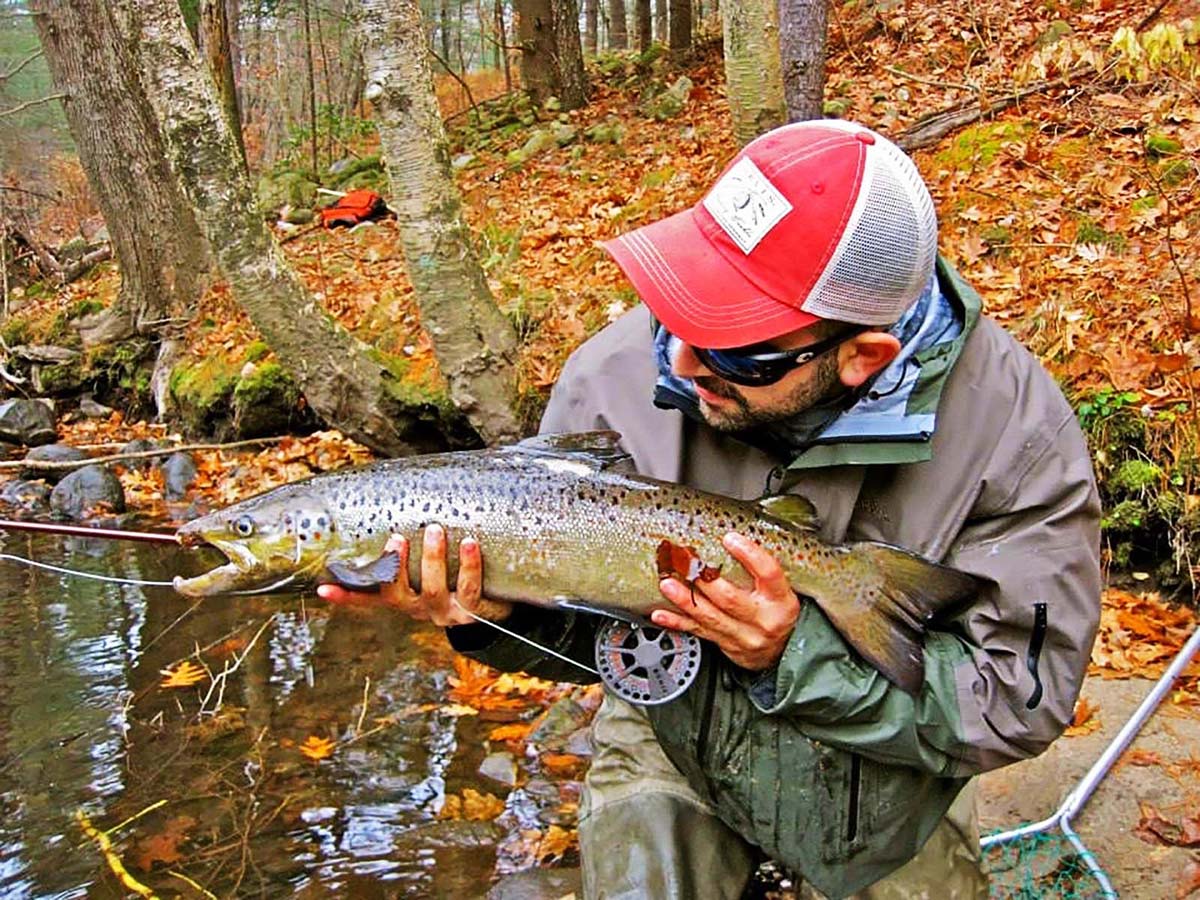
Spinning Gear
When I began my salmon quest, I quickly realized I was over-gunned, and likely scaring them away with every cast. There is no need for surfcasting gear here. This more of a finesse game; a 7-foot medium-action spinning rod paired with 3000 class spinning reel is the right tool for the job. I use 10- to 15-pound braided line, because I like the sensitivity and small diameter. I have done pretty well with very few issues, even in cold weather. If you prefer mono, that will also work just fine. When using braid I will always use 4- to 6-foot section of 8- to 15-pound fluorocarbon leader. You can do the same, for added stealth when using mono as your main line.
I use all the same lures that I would typically use for trout, except I may go up one or two sizes depending on water clarity and flow. Single, free-swinging hooks are a requirement in all salmon stocking areas, so regardless of the lure, you must remove the treble hooks and replace them with the single hook of your choice. Small shallow-running crankbaits such as the Rapala Original, or Husky Jerk in silver or gold are good choices, Kastmasters, Phoebe’s and Minnow Spins are also good choices. Salmon may shy away from terminal tackle so I recommend tying direct.
Do not rush into the water immediately! I begin by casting from the bank, either straight out or at a 45-degree angle downstream, allowing my lure to be swept downstream. I may add a few small twitches here and there. Start by making short casts, then methodically cast further and further to cover the water in front of you, then take a few steps into the water, so as to not spook any fish holding near the bank. I have had many strikes when my lure reached the end of its swing, so don’t rush to reel it in immediately.
Fly Gear
| GEAR FOR THE TASK |
| • Waders are not a must, but are highly recommended. • Be sure to dress warm and in layers. • A pair of warm socks is very important. • Rain jacket for wind and rain • A net is an absolute must and it should be larger than your typical trout net. • Polarized Sunglasses are a must for spotting fish in the water |
Eight- to 9-foot medium to fast action fly rods between a 5 and 9 weight are ideal, depending on the size of the salmon in the river. The smaller fish typically stocked first range between 2 and 7 pounds and can easily be tamed using 5- to 7-weight rods. The larger fish range between 8 and 15 pounds with larger fish mixed in, for these trophy-class specimens a rod with more backbone may be required to get them in quickly and facilitate a faster release.
In most sections of the upper Naugatuck River there aren’t many areas that will exceed 40 feet in width. A medium to medium-fast rod will suit most fly fishing situations. The faster the action of the rod, the easier it will be for the caster to punch through the wind and cast longer distances. In the lower sections of the river there are much wider areas where a spey or switch rod can be utilized to cover more water with a much easier casting stroke.
Filling The Spool
I like to use a slow-sink intermediate line for most situations, unless there are periods of extreme low water in which case I would switch to a floating line. I find that the salmon are more likely to take a fly a foot beneath the surface rather than on or near the surface. Over half the time I spend fly fishing for these fish, I’m using a slow-sinking line (1 to 3 inches per second). Some may argue that a floating line is good for all situations on this river and yes, a floating fly line will allow you to pick it up off the water more swiftly and easily to make another cast while also allowing you to present dry flies to these fish. But, the fact that fish seem to prefer flies fished a little deeper in the water has sealed my slow-sink preferences. I rarely use a heavy sinking line or full sink line because most of the river is fairly shallow, however there are some deep holes where the fish like to lie, so it may be good to have one in case of extreme high water, or to reach the bottom in the deeper holes. As far as backing goes, simple 20-pound Dacron is perfect and you’ll want to have at least 100 yards on the reel.
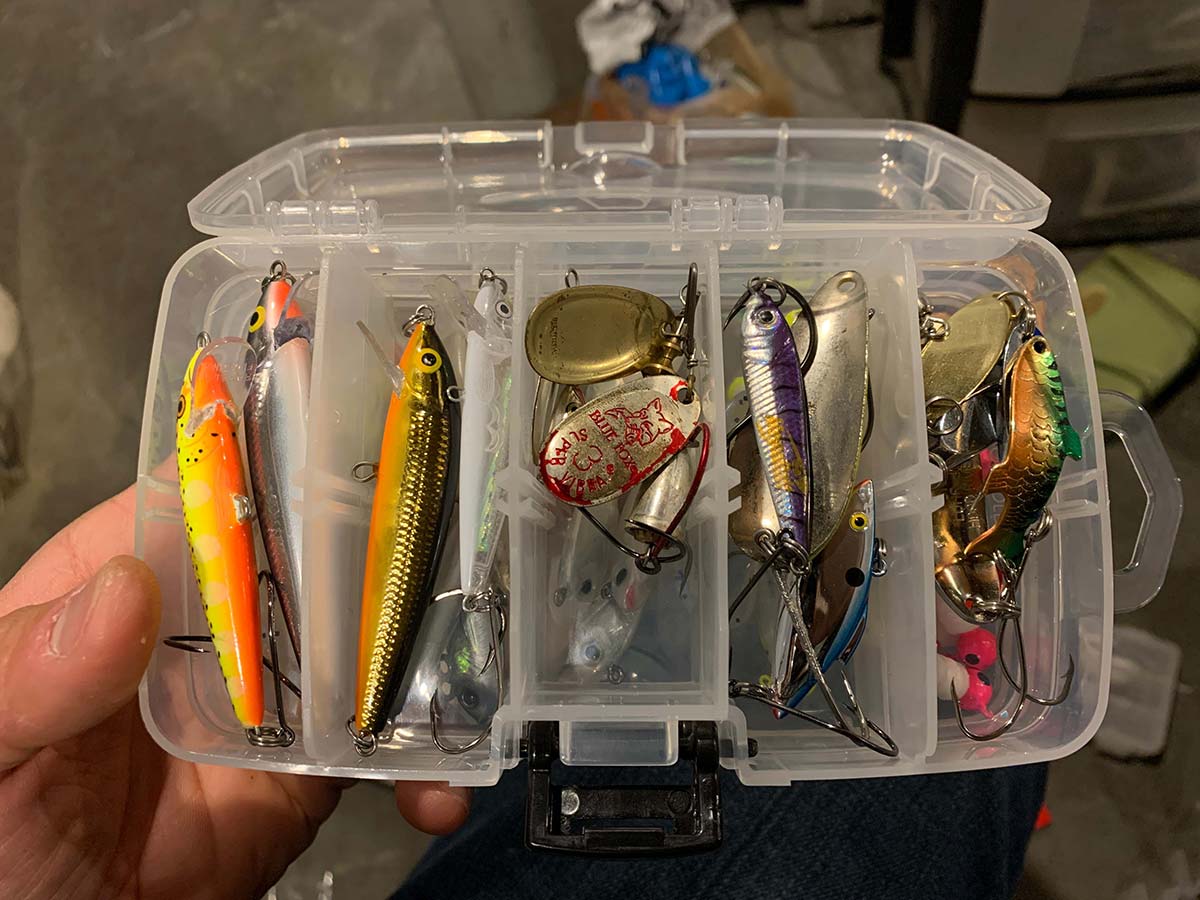
Fly Techniques
There are three main approaches to fly fishing for Atlantics; swinging and slow stripping trout style streamers or traditional Atlantic salmon flies, dead drifting nymphs, and fishing dry flies. My fly box usually contains a mix of streamers, nymphs, traditional salmon flies and few dries, just in case. These include: the Wooly Bugger, Zonker, Mickey Finn, Grey Ghost and Goldie, for streamers; Hare’s Ear, Stonefly, Golden Stonefly for nymphs; Blue Charm, Green Highlander, Butterfly, and Various Tube Flies for the traditional salmon flies; and the Bomber, Royal Wulff and Stimulator for dry flies.
Blindcasting
Swinging and slow-stripping streamers, and traditional salmon flies is a great technique when prospecting new water, or when fishing large sections of the river. This can be very productive (by Connecticut Atlantic salmon standards) because you are able to cover a lot of water and depths. The methodology is not much different than spin fishing; cast either straight out or at a 45-degree angle downstream and allow the fly to be swept downstream and when the fly line straightens out and your fly is just swaying in the current is a likely time to get a strike, so don’t be tempted to strip it in right away.
Sight Fishing
It is very possible when walking along the banks of the river, especially in the shallower sections to come across a fish or two in the heads or tails of a pool. Once spotted you should proceed with caution, as to not spook the fish. Plant yourself upstream at roughly a 45- degree angle (or more) from the fish, so that your offering will swing just past its nose or dangle in front of its face in the current. Usually the fish will pounce, but you may have to try multiple times. Don’t be afraid to switch colors/sizes of your offering. You can also try dead drifting a larger nymph, or skating a dry fly in this scenario.
| SALMON REGULATIONS |
| “In the Naugatuck, Housatonic and Shetucket Rivers, angling for Atlantic salmon is restricted to catch-and-release only from September 1 through December 15. From December 16, through March 31, the daily creel limit for Atlantic salmon will be one. During the open season in the rivers, the legal method for taking Atlantic salmon is limited to angling using a single fly, or an artificial lure with a single free-swinging hook and no additional weight can be added to the line above the fly or lure. Also, from September 1 through March 31, fishing for other species in the designated Atlantic salmon “Broodstock” areas is restricted to the gear designated for Atlantic salmon. “ |
When targeting these Atlantics, it is important to keep in mind that a good day of fishing is catching one to three fish. Anything more than that would be superb! The best way to ensure success is to systematically dissect each section of the river; head of the pool (where the water is quickest), the slower deeper water in the center, and the tail out (end of the pool). I prefer the 5:2 method. Take five casts and two steps down the river, thus ensuring total coverage. This applies for fly fishing and spin fishing. You can either run the same offering through the entire section, or switch things up and hit key spots again. It’s good to switch up your presentations, until you get a response, then stick with it. A swipe at your offering means you are on the right track. Keep at it and try to learn from each experience. Keeping a fishing log helps exponentially. Tight lines!
Special thanks to Jeff Yates of Trout Unlimited for helping shorten my learning curve.
